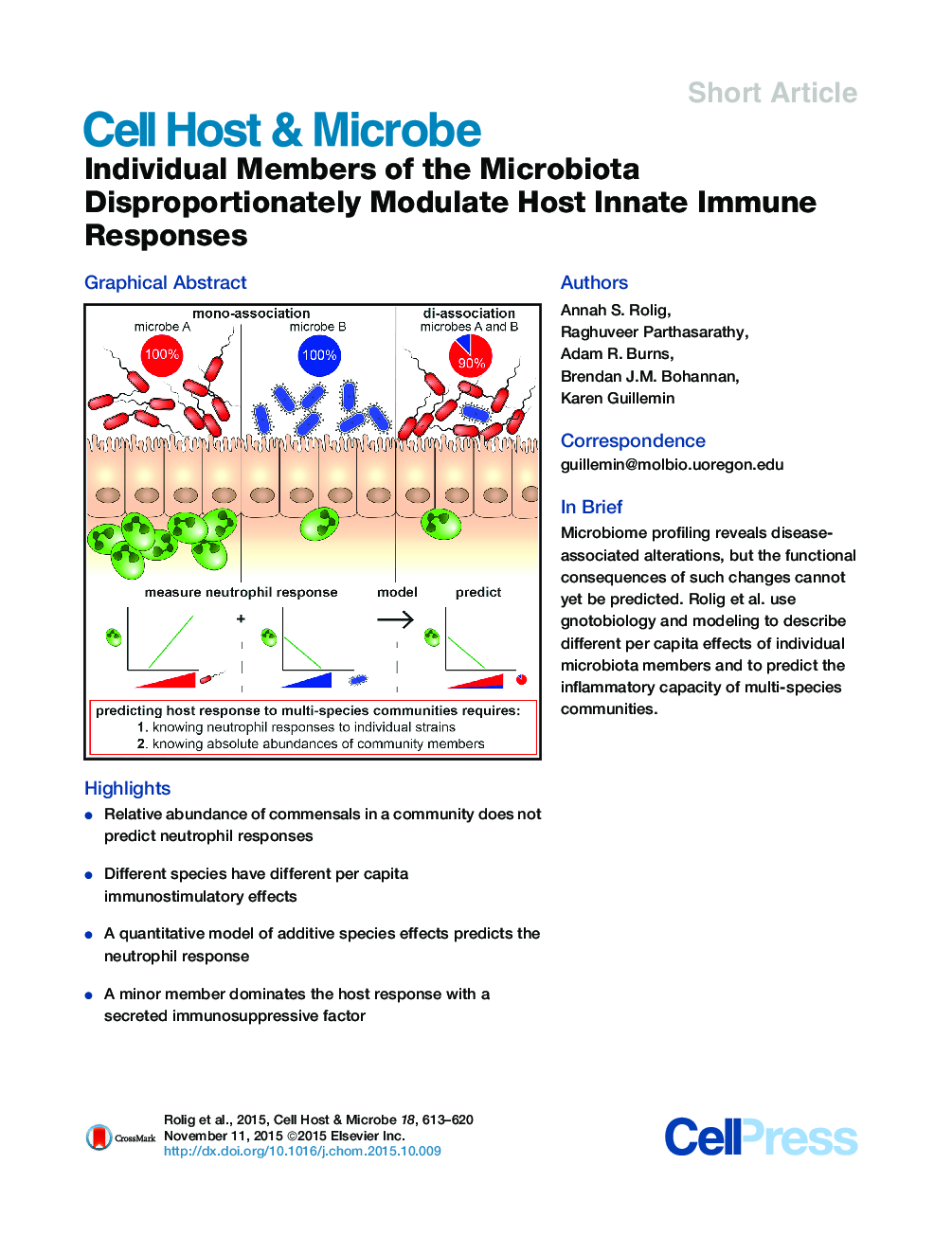| Article ID | Journal | Published Year | Pages | File Type |
|---|---|---|---|---|
| 4360941 | Cell Host & Microbe | 2015 | 8 Pages |
•Relative abundance of commensals in a community does not predict neutrophil responses•Different species have different per capita immunostimulatory effects•A quantitative model of additive species effects predicts the neutrophil response•A minor member dominates the host response with a secreted immunosuppressive factor
SummaryPredicting host health status based on microbial community structure is a major goal of microbiome research. An implicit assumption of microbiome profiling for diagnostic purposes is that the proportional representation of different taxa determine host phenotypes. To test this assumption, we colonized gnotobiotic zebrafish with zebrafish-derived bacterial isolates and measured bacterial abundance and host neutrophil responses. Surprisingly, combinations of bacteria elicited immune responses that do not reflect the numerically dominant species. These data are consistent with a quantitative model in which the host responses to commensal species are additive but where various species have different per capita immunostimulatory effects. For example, one species has a high per capita immunosuppression that is mediated through a potent secreted factor. We conclude that the proportional representation of bacteria in a community does not necessarily predict its functional capacities; however, characterizing specific properties of individual species offers predictive insights into multi-species community function.
Graphical AbstractFigure optionsDownload full-size imageDownload high-quality image (318 K)Download as PowerPoint slide
